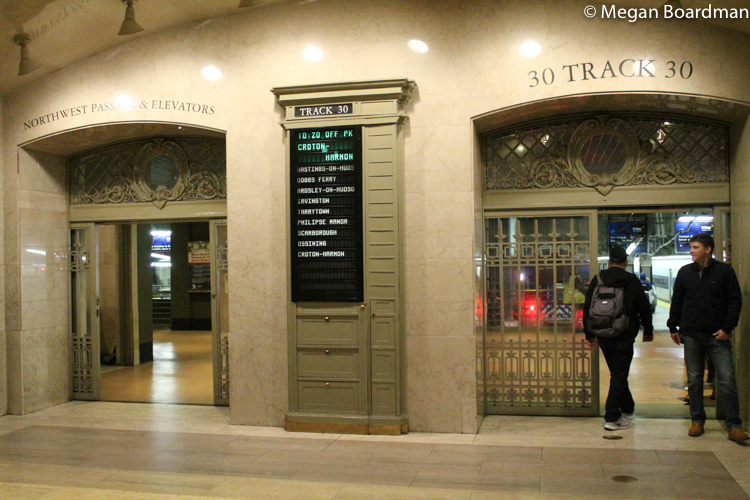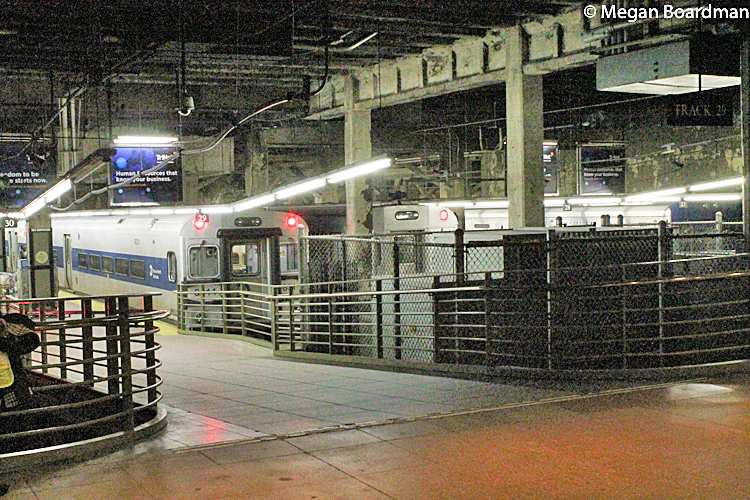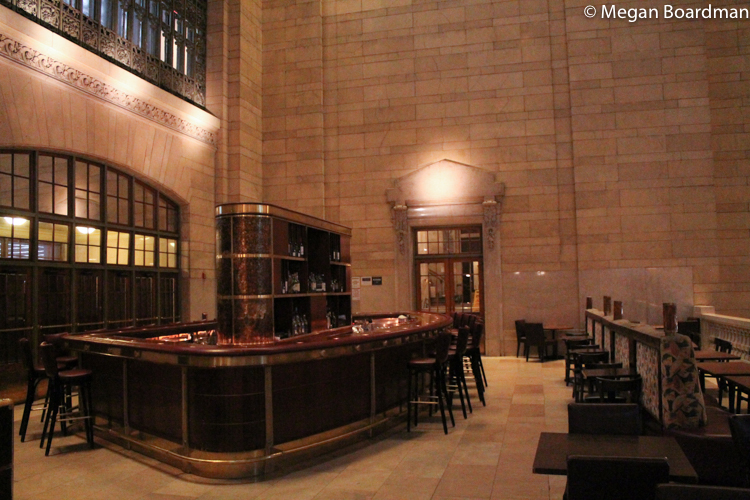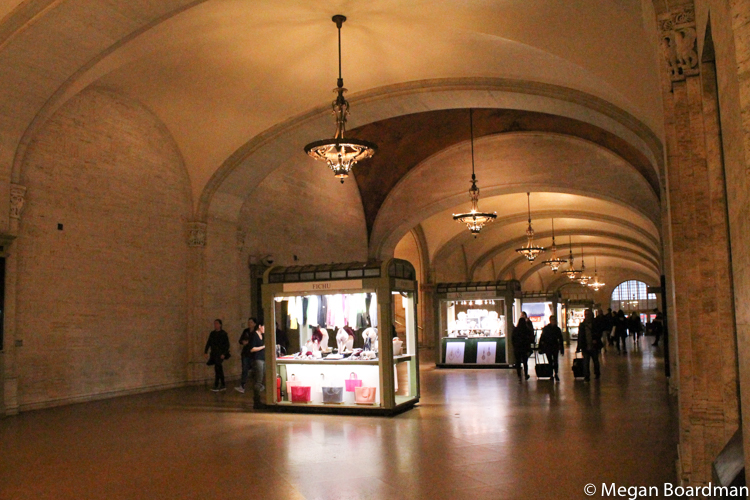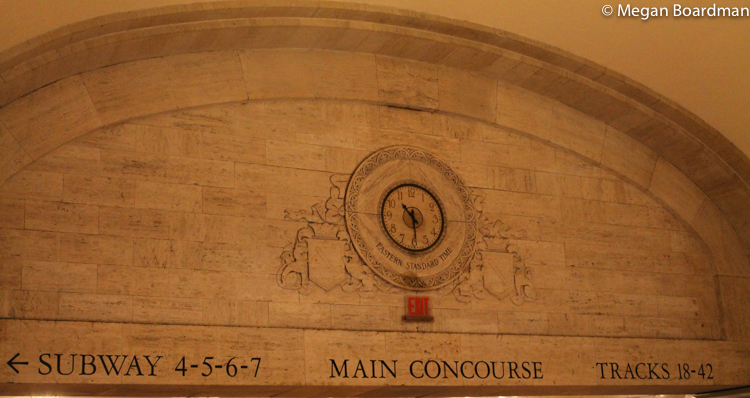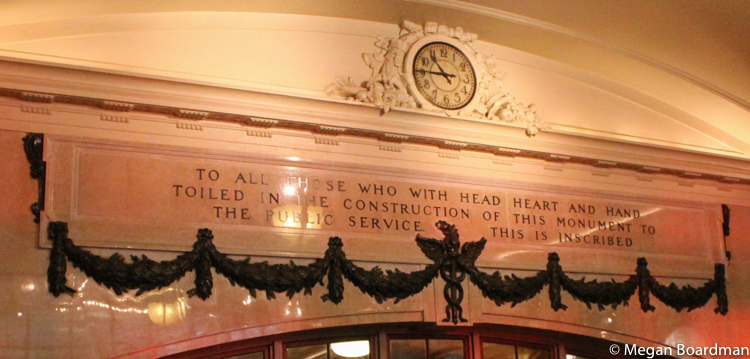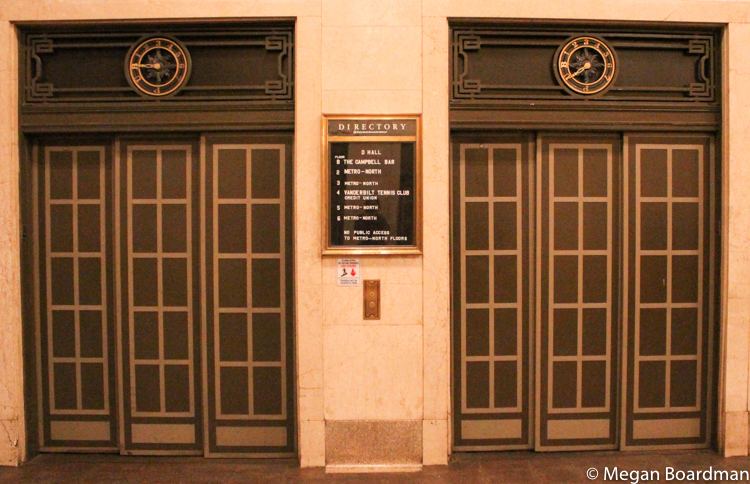

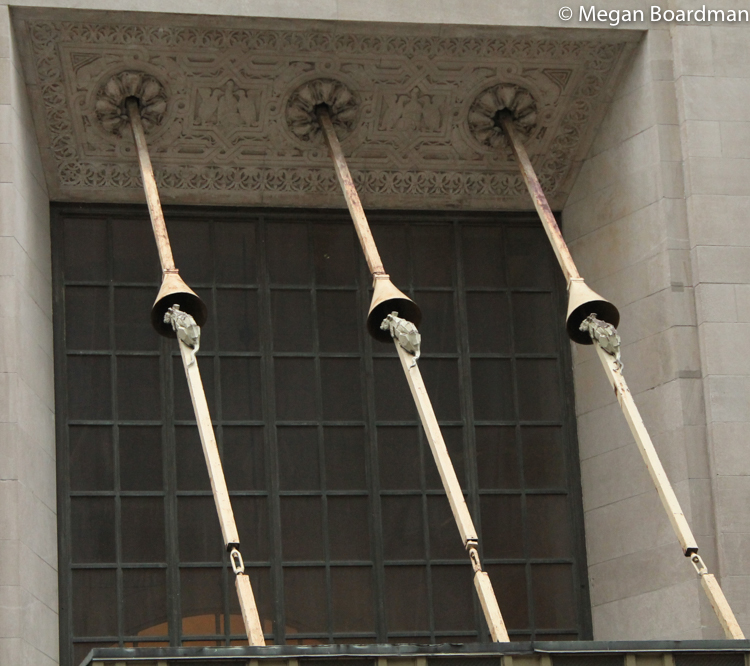 - Inside -
- Inside -
".... the Main
Concourse, the climax of the entire
composition. .....'breathtakingly
grand' and in the opinion of the
eminent architectural historian, Henry
Russell Hitchcock, 'one of the
grandest spaces the early 20th century
ever enclosed', has captured the
affection and admiration of
generations of travelers."
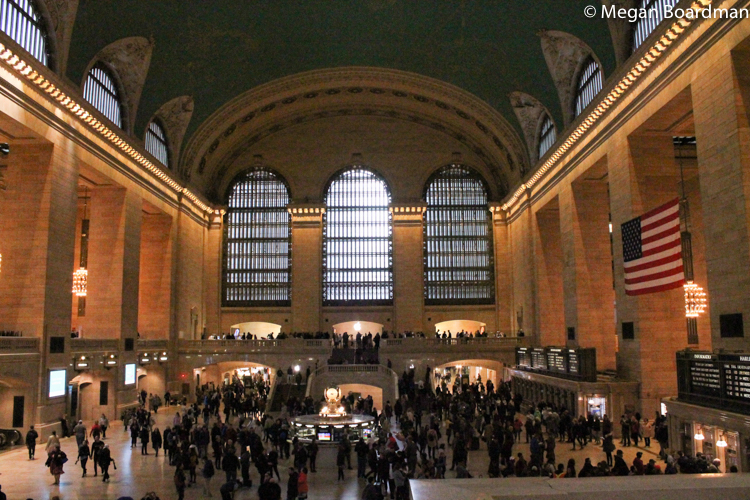

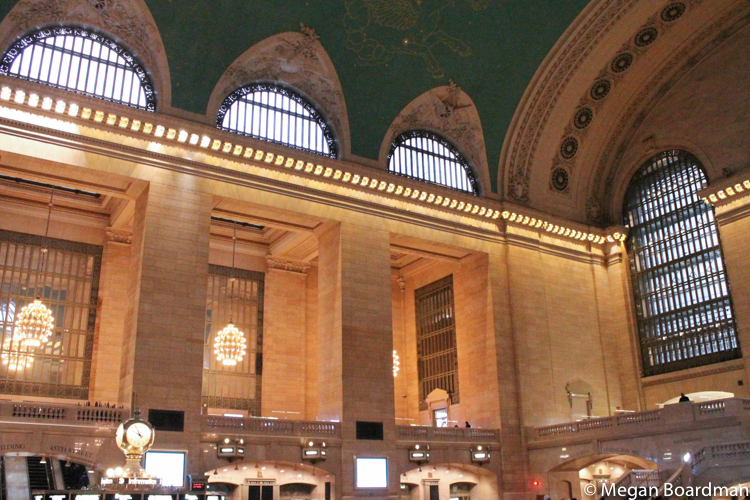

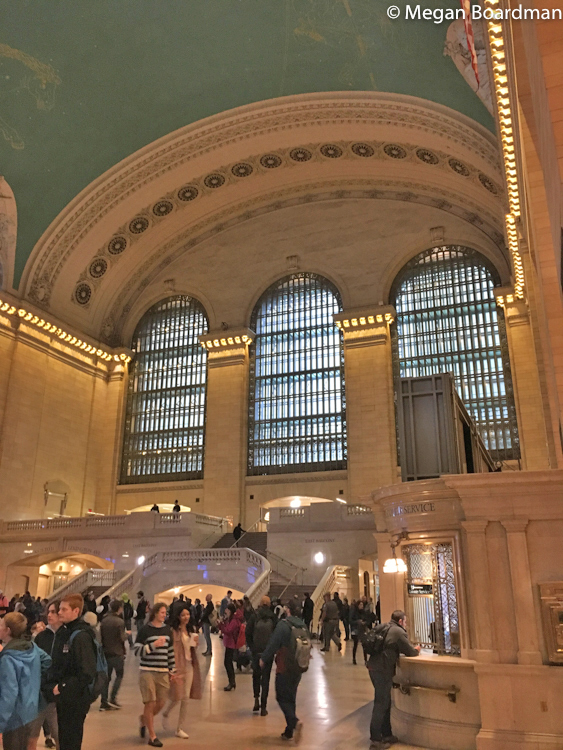
The ephemeralnewyork.wordpress.com
website explains the story behind the
chandeliers. It says that, ".... Dropping
from Vanderbilt Hall and other parts
of Grand Central Terminal like
heavenly jewels are spherical
chandeliers—each with its light bulbs
bare and exposed. There’s a
reason for this, and it stretches all
the way back to the building’s
construction and design at the turn of
the last century. The Vanderbilt
family, which built this third version
of Grand Central at 42nd Street, were
“immensely proud of Grand Central’s
status as one of the world’s first
all-electric buildings,
Previously, train stations and the
engines that went in and out of them
were smoky and sooty, making them
unpleasant—not to mention
unsafe. In fact, their pride
greatly influenced the station’s
interior designs. When it first
opened, every one of the stations
chandeliers and lighting fixtures
featured bare, exposed light
bulbs—more than 4,000 of them.”

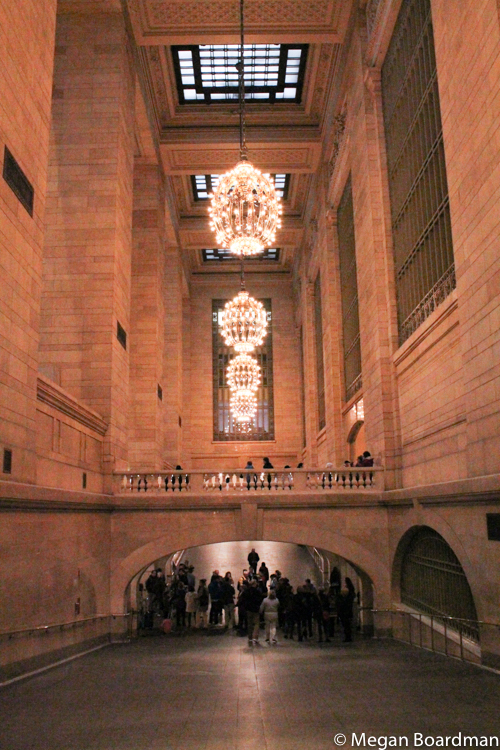
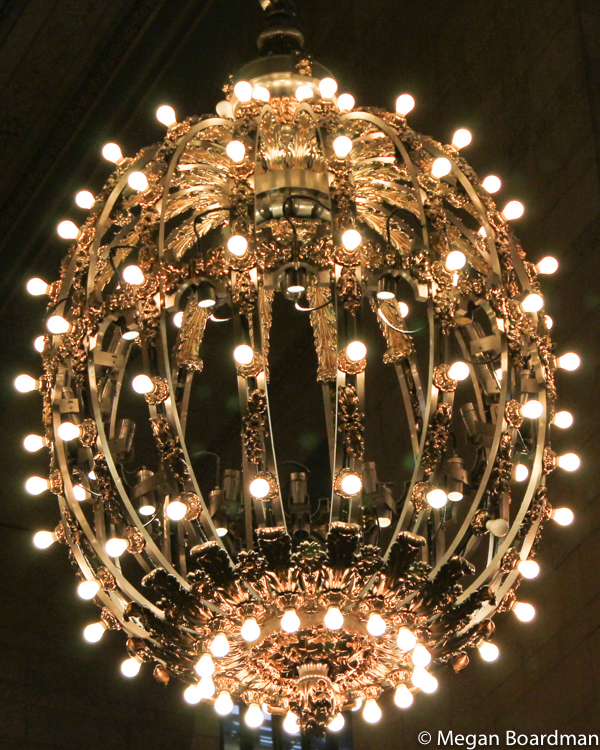
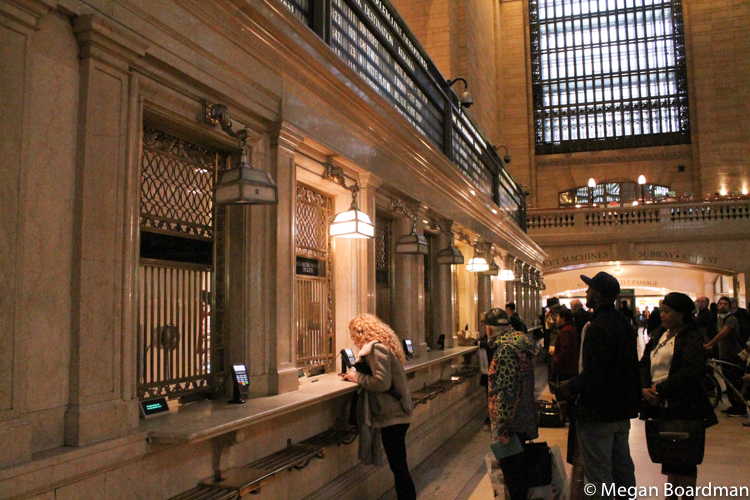

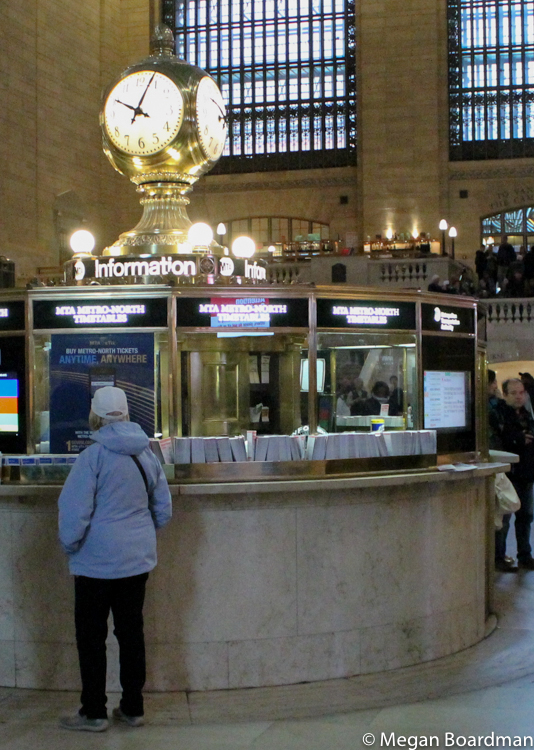
The information booth shown above was
originally a ticket counter connected by a
spiral staircase with another on the level
below.
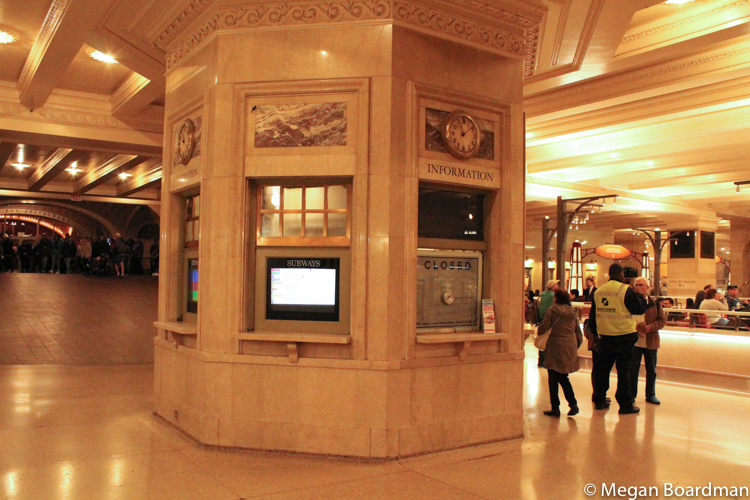
"The round-arched
entrances to the train platforms are
surmounted by lunettes containing
foliate ornament against a trellised
ground."
